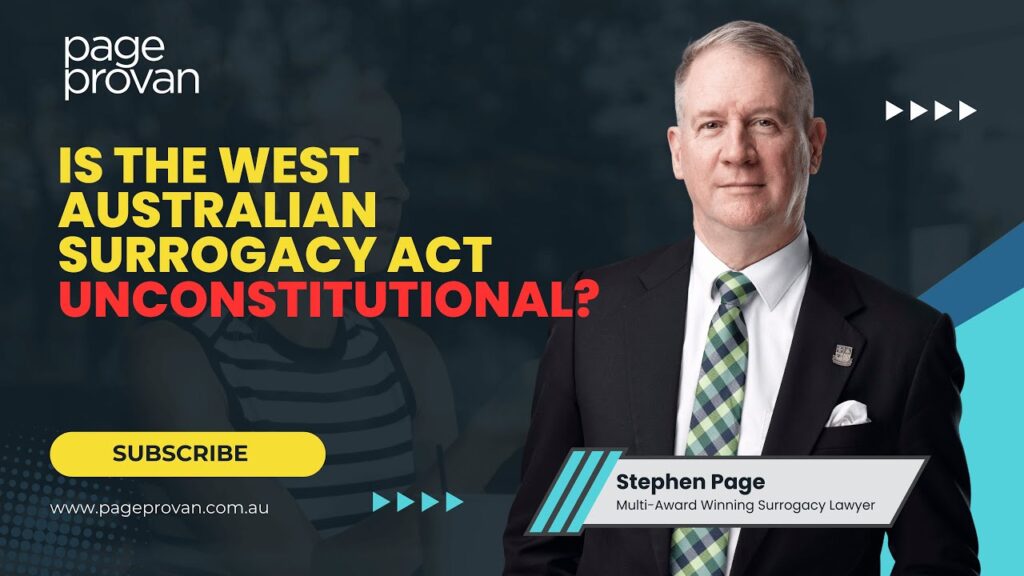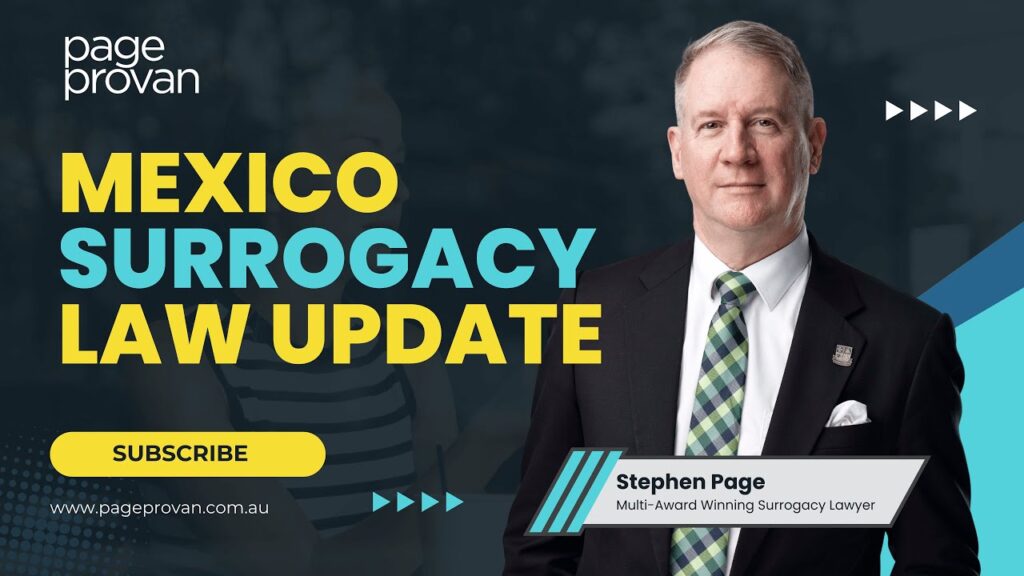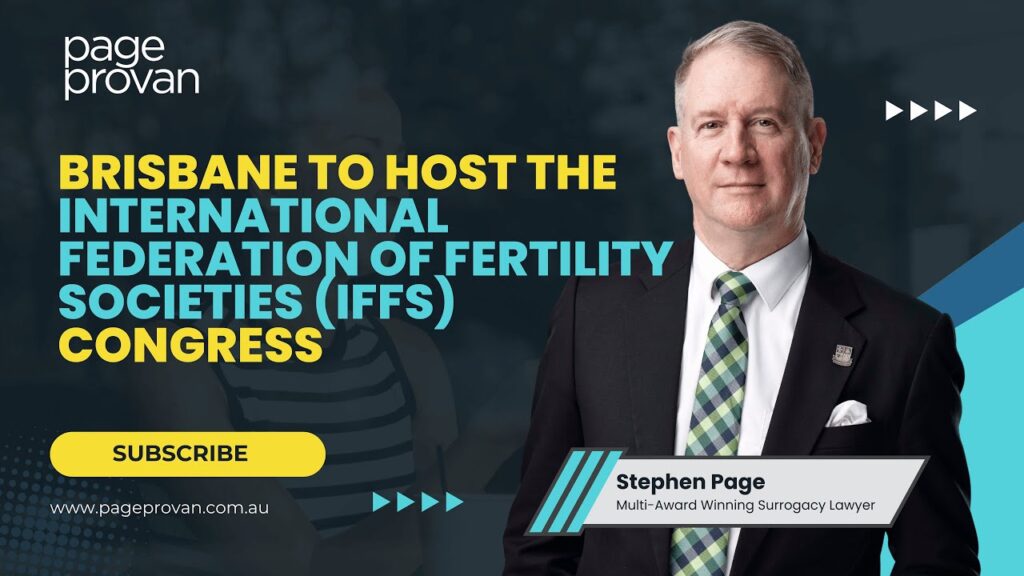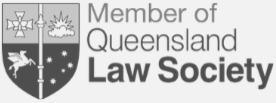NSW surrogacy law is not extra-territorial: judge
It is depressing to read a judgment and realise that a judge has got something fairly basic wrong. It is even more depressing, as a family lawyer of 38 years post-admission, to see a judgment where the judge got two significant issues of law wrong in the judgment.
Sadly, that occurred in the case of Noake & Chatwyn [2025] FedCFamC1F 332, decided in May.
A married couple underwent surrogacy and egg donation overseas, in what is described as country B. Country B only allows heterosexual couples to undertake altruistic surrogacy. Commercial surrogacy is banned. It was conceded that the surrogacy agreement was a commercial surrogacy arrangement as defined under NSW law.
At the time they entered into the agreement, the couple lived in that country. They continued to live there, both before and after the child was born.
The father was an Australian citizen. The child had obtained Australian citizenship by descent. The couple intended to move to Australia by the time the child was 4 or 5 so she could attend school in Australia.
The immediate problem, though, was that only the father was on the birth certificate- along with the surrogate. The intended mother was not named as a parent on the birth certificate.
Like the Queensland couple who did surrogacy in North Cyprus, and struck the same problem, the thought about how to fix this was to apply to the Federal Circuit and Family Court of Australia for leave to adopt- and then after the child was 5 obtain an adoption order in NSW.
Mistake 1
Justice Anderson was concerned not to implement a commercial surrogacy arrangement, but took the view that New South Wales, unlike Queensland, did not have extra-territorial surrogacy laws.
His Honour said:
“I was concerned that commercial surrogacy is prohibited by operation of section 8 of the Surrogacy Act 2010 (NSW). This being so, and for the reasons eloquently identified by Justice Carew in Lloyd & Compton (“Lloyd”), I was anxious not to circumvent the clear intention of the legislature. However, and unlike the legislation, which fell for consideration by Carew J in Lloyd, the New South Wales legislation in the form of s 11 of the Surrogacy Act 2010 and s 10C of the Crimes Act 1900 (NSW) make it clear that the prohibition against commercial surrogacy does not have extraterritorial application. This being so, the arrangement entered into between the applicants and the first respondent was not unlawful under New South Wales law.”
Sadly, Justice Anderson was wrong on this point. While it seems the arrangement was lawful, at least in NSW, the effects of those provisions are:
- If an overseas commercial surrogacy arrangement is entered into by a person who is ordinarily resident in or domiciled in NSW, the offence is committed. [ As the parties lived in Country B, it is unlikely they would have committed the offence.]
- If part of the offence or the effect of the offence occurs in NSW, then the offence is committed in NSW. [It is unlikely the offence would have been committed, as they lived overseas.]
Justice Anderson does not know the history of the Surrogacy Act. The Surrogacy Bill 2010, which became the Act, had no reference to overseas criminalisation. That was added by a Minister, Linda Burney, at a late stage of the debate, with no notice, no engagement of stakeholders or any publicity beforehand.
There was a firestorm as a result. Intended parents found that their journey was now criminal, when it had not been. Others, halfway through their journey feared they would be criminalised. I, for one, was overwhelmed by panicked intended parents.
Surrogacy Australia started because of this criminalisation.
The firestorm was so great that regulations were written that had the effect if an overseas surrogacy agency was hired before the commencement date, that was lawful:
“Section 11 of the Act does not apply in respect of any act done outside New South Wales by a person in connection with a surrogacy arrangement or proposed surrogacy arrangement if the person engaged a surrogacy service provider before the commencement of the Act to arrange the surrogacy arrangement.”
The Surrogacy Act commenced on 1 March 2011.The night before, I was a guest on Insight on SBS, Baby Business, as was Linda Burney. It was clear that the law applied overseas. That was a central topic of discussion.
Insight’s intro page for the episode says:
“NSW has just joined Queensland and the ACT in taking a hard line against paying for the services of a surrogate, now banning the practice even if you go overseas to do it.”
In two judgments in June, 2011, then Justice Watts made plain that from 1 March 2011 intended parents from NSW could be caught by the extra-territorial law under the Surrogacy Act 2010 (NSW), or the long arm law under s.10C of the Crimes Act. Before 1 March 2010, commercial surrogacy was illegal in NSW under the Assisted Reproductive Technology Act:
“Although s 43 ARTA (NSW) created an offence had the applicants done what they had done entirely in New South Wales, before 1 March 2011 it was not illegal for a person ordinarily resident or domiciled in New South Wales to enter into a commercial surrogacy arrangement outside Australia. The offence created by s 43 ARTA (NSW) was subject to Part 1A Crimes Act 1900 (NSW) (“CA (1900)”) and in particular, s 10C CA (1900). It is not clear that it could be said that the offence has an effect in the State of New South Wales. Part 1A CA (1900) and in particularly s 10C CA (1900) would mean that the applicants are unlikely to be guilty of a criminal offence.
The Surrogacy Act 2010 (NSW) has now created a geographical nexus so that persons resident and/or domiciled in New South Wales do commit an offence if they enter into a commercial surrogacy arrangement whether within New South Wales or anywhere outside New South Wales.”
Mistake 2
His Honour held that because there had not been a state or territory parentage order made, therefore the father was not a parent.
Therefore, the father could not enable a step-parent adoption order to be made in favour of the wife. Therefore, the application for leave to adopt by the wife was withdrawn, following comments by Justice Anderson to that effect.
The law, however, is clear that the man was a parent either because of biology and intention, or because of the birth certificate.
His Honour followed the approach in the case earlier this year of Lloyd & Compton. In neither case, was the judge seemingly advised of other cases in which a biological father through surrogacy had been held to be a parent.
Like Lloyd:
“The applicants’ solicitor did not address the fundamental jurisdictional question, whether the applicants can make an application for a parenting order under Part VII of the Act.”
In other words, the judge had to wing it, rather than have guidance from the lawyer about other case law, as would usually occur.
There have been three cases, two in 2021, and another in 2024, when other judges have held that the biological father through surrogacy, including in two of those cases- commercial surrogacy- was held to be a parent of the child.
In one of those cases, for example, the court said:
“Here, the first applicant provided the sperm for the conception of the child, on the basis that he would be the child’s parent, that he would be registered on the child’s birth certificate (which indeed he was) and that he would care for the child as his parent. He has done the latter and insofar that he is able under the interim orders as varied by the consent arrangement after mediation.
I have no difficulty in finding that the first applicant is a parent of the child.”
Noake was decided after changes to the Family Law Regulations, the 2024 Regulations replacing the 1984 Regulations. Under section 69R of the Family Law Act, a person is presumed to be a parent if they named on a birth certificate for a child born in a prescribed overseas jurisdiction. From 13 December 2024, Black Friday, now many countries are so named. From the features of the case, it is clear that the father was presumed to be a parent under that section, a matter not considered by his Honour.
The case illustrates that surrogacy law is tricky. It is important to obtain expert advice. As well as being a father through surrogacy, since 1988 I have advised in over 2,000 surrogacy journeys for clients throughout Australia. I have had clients from 39 other countries.
My experience is unparalleled, with precedent decisions in surrogacy/ART in:












